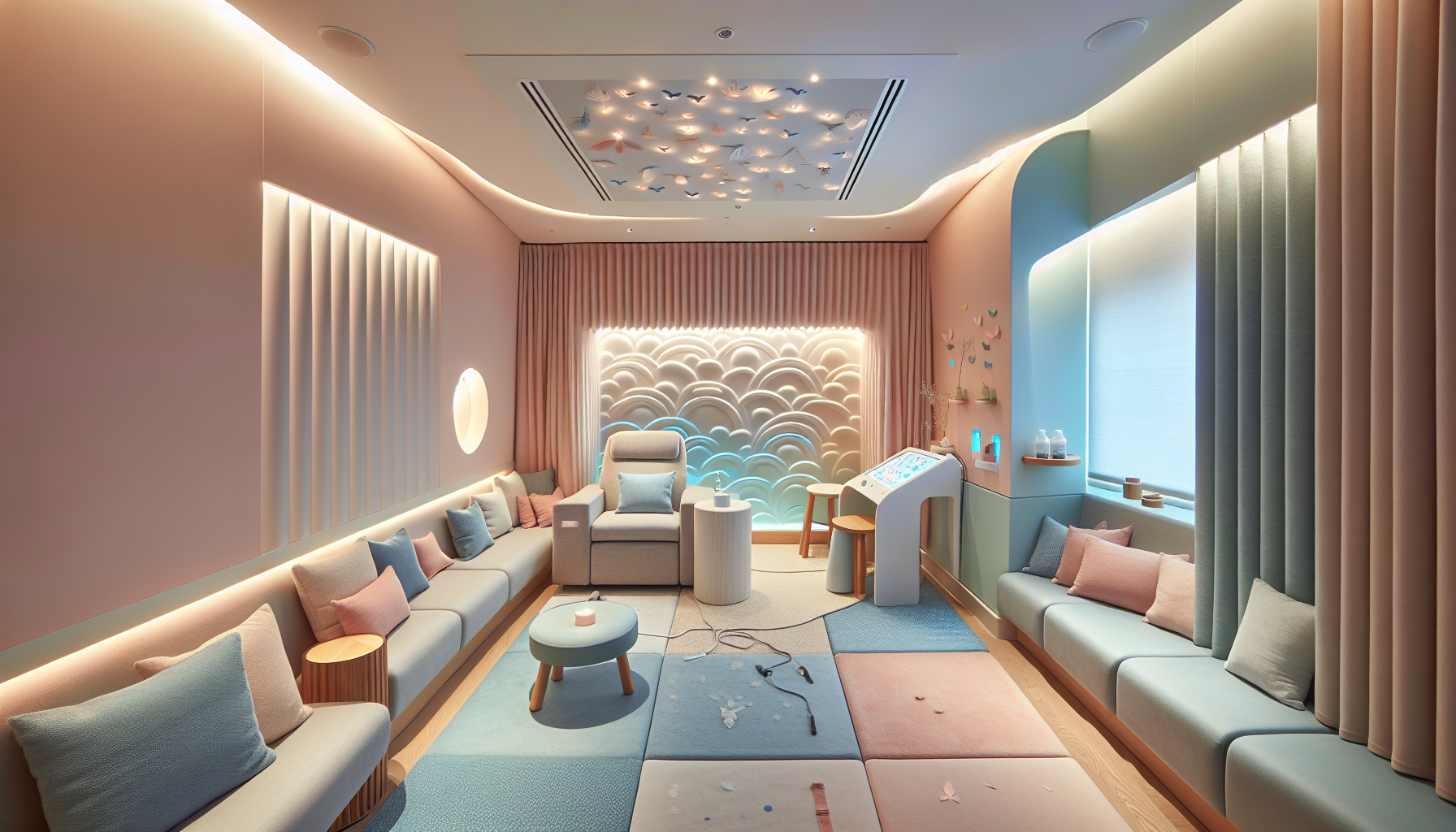Sensory rooms are specialized therapeutic spaces designed with the purpose of delivering a calming and stimulating environment for individuals with sensory processing issues, mental health concerns, and developmental disabilities. The incorporation of sensory rooms into mental health facilities is a reflection of the growing recognition of the significant role that sensory experiences play in overall health and well-being.
The Foundations of Sensory Health
Sensory health involves the efficient processing of sensory input by the brain to form appropriate motor and behavioral responses. It is an essential aspect of everyday functioning and is intricately linked to other areas of health, such as brain health, which encompasses cognitive functions and neurological well-being. Sensory rooms are designed to enhance sensory health by providing a safe space where all senses can be engaged in a controlled manner.
Design and Features of Sensory Rooms
Typically, sensory rooms feature a combination of lighting effects, colors, textures, sounds, and sensory soft play objects that can either calm or stimulate the senses. They may include items such as weighted blankets, fiber optic strands, bubble tubes, and music with different frequencies to cater to individual sensory needs.
Calming Environments
For individuals who experience sensory overload or are in a heightened state of anxiety, calming sensory rooms can be invaluable. They are typically designed with soft lighting, muted colors, and gentle sounds. These elements help to reduce stress and promote a sense of safety and tranquility.
Stimulatory Environments
Conversely, for those who may have low sensory arousal and require stimulation to engage with their environment, stimulatory sensory rooms can provide the necessary sensory input. These rooms may include bright, contrasting colors, tactile panels, and equipment that encourages movement, like swings or trampolines.
Benefits of Sensory Rooms in Mental Health
The benefits of sensory rooms are vast and can lead to significant improvements in the mental health and overall quality of life for individuals who use them. Here are some of the key benefits:
- Stress Reduction: Sensory rooms can help decrease cortisol levels, thereby reducing stress.
- Anxiety Management: Controlled sensory input can help soothe and manage symptoms of anxiety.
- Behavioral Improvement: For individuals with behavioral challenges, sensory rooms can serve as a safe space to de-escalate emotions.
- Cognitive Development: Engaging in sensory play can stimulate cognitive processes and enhance focus.
- Social Skills: Shared sensory spaces can promote social interactions and communication.
Integrating Sensory Rooms with Other Therapeutic Approaches
Sensory rooms can be integrated with a variety of therapeutic strategies to enhance their effectiveness. For instance, individuals with ADHD may benefit from managing ADHD symptoms through the use of sensory diets, which can be practiced within sensory rooms.
Moreover, sensory rooms can be a part of a broader approach to personal development by promoting sensory awareness, which is crucial for emotional and social growth.
Evidence-Based Support for Sensory Rooms
The use of sensory rooms is supported by a range of studies and clinical evidence that emphasize their therapeutic value. For example, research has shown that sensory room interventions can lead to decreased aggression and self-harm in psychiatric inpatients.
External resources that provide in-depth analysis and support the efficacy of sensory rooms include:
- The STAR Institute for Sensory Processing Disorder, which offers comprehensive research and resources on sensory processing and its impact on mental health.
- The American Occupational Therapy Association, which provides guidelines and evidence-based practices for sensory integration therapy.
Considerations for Implementing Sensory Rooms
When implementing sensory rooms in mental health facilities, it is important to consider the individual needs of the users. Sensory rooms should be customizable and adaptable to accommodate a wide range of sensory preferences and therapeutic goals.
Additionally, staff training is crucial to ensure that the sensory rooms are used effectively and safely. Mental health professionals should be knowledgeable about sensory processing and how to guide individuals through sensory experiences.
Inclusive Design and Accessibility
Making sensory rooms accessible and inclusive is vital. They should be designed to cater to individuals of all ages and abilities, and considerate of those with physical disabilities. Creating inclusive playgrounds with sensory stations is a related concept that can inspire the design of sensory rooms within mental health facilities.
Future Directions in Sensory Health
The field of sensory health is continually evolving, with new technologies and research expanding the potentials of sensory rooms. The use of virtual reality and other digital tools to simulate sensory environments offers promising avenues for remote or individualized therapy.
Concluding Thoughts
Sensory rooms represent a fusion of therapeutic innovation and compassionate care in mental health services. By tailoring sensory experiences to support mental health, facilities can offer a holistic approach that empowers individuals to manage their sensory needs and improve their overall quality of life.
For more information on sensory health and strategies for creating sensory-friendly spaces, visit Avix Health. Engaging with sensory health is a journey that can lead to profound benefits and improved outcomes for those with sensory processing challenges, and sensory rooms are at the forefront of this transformative practice.



